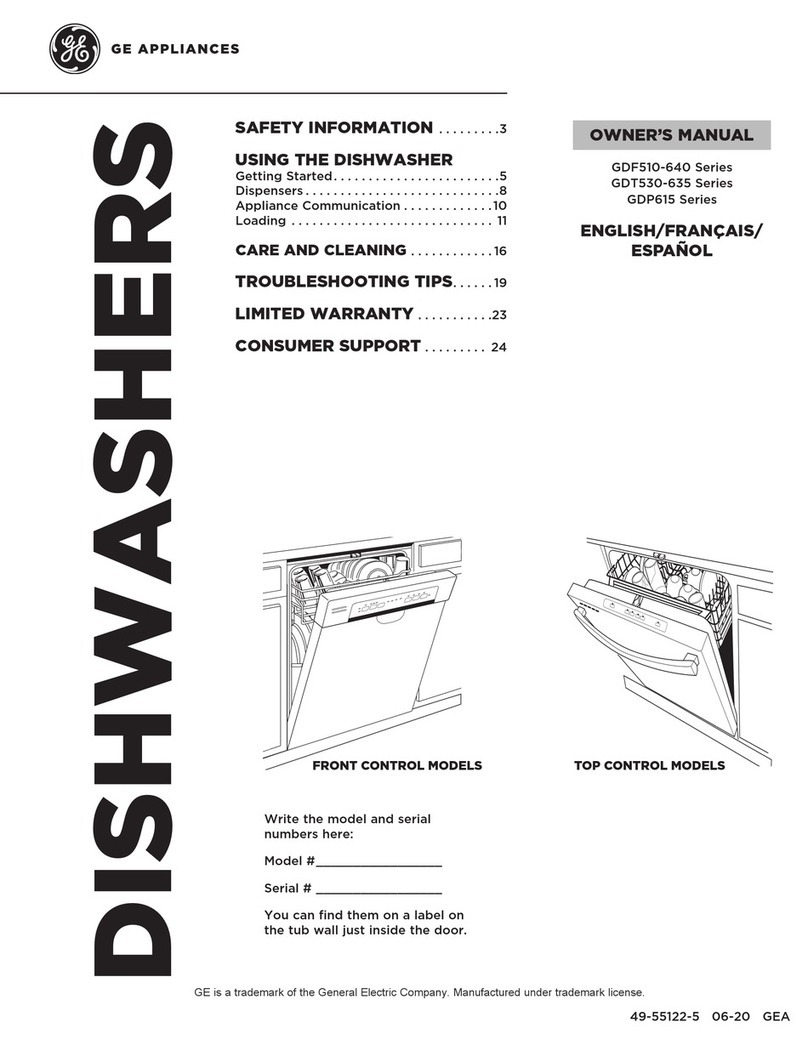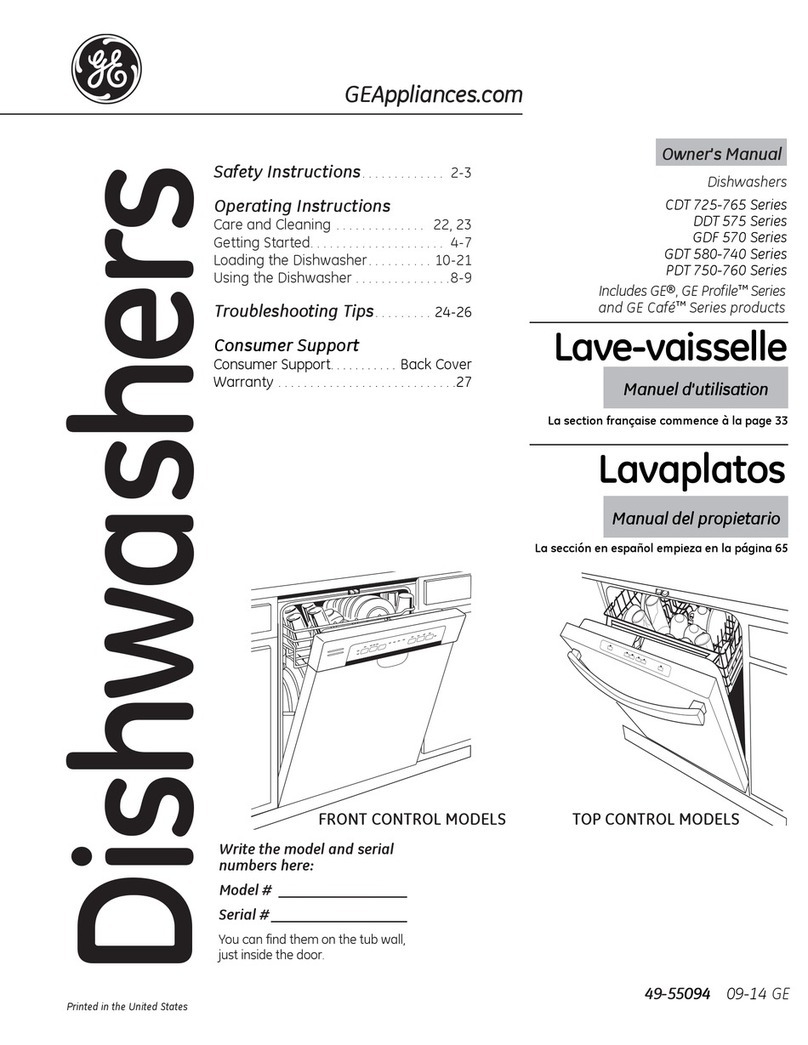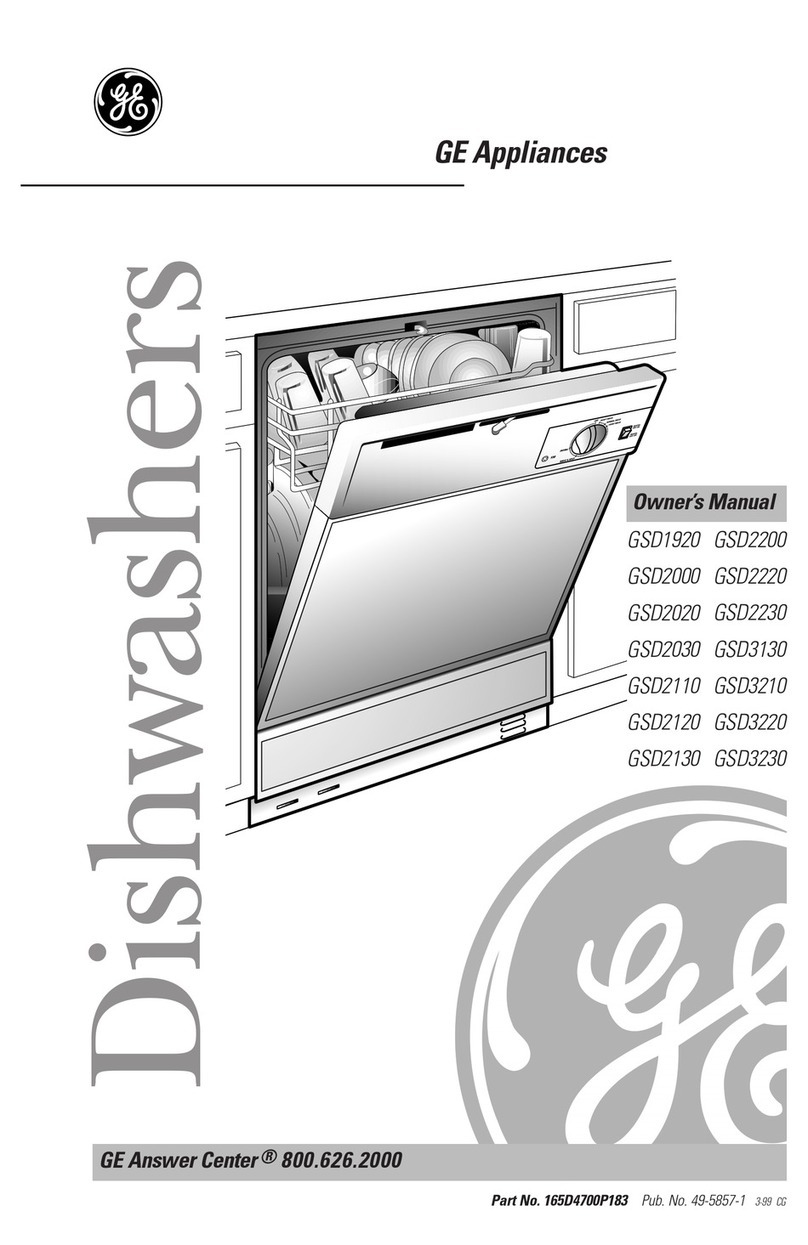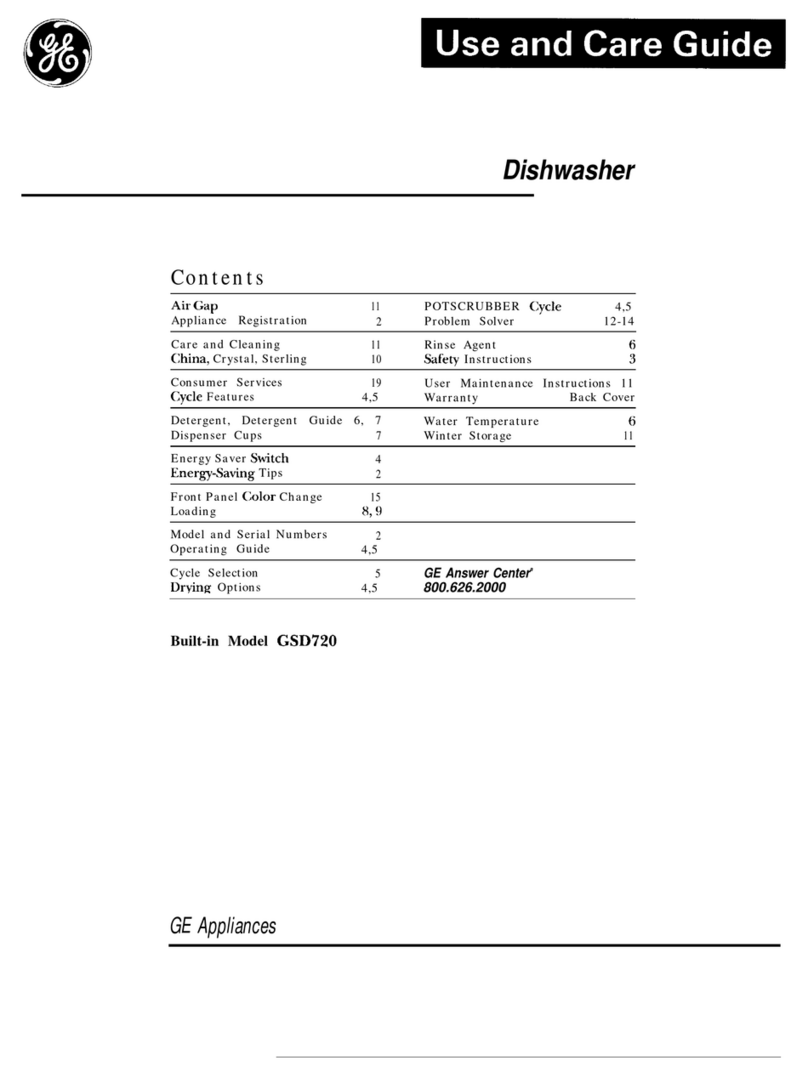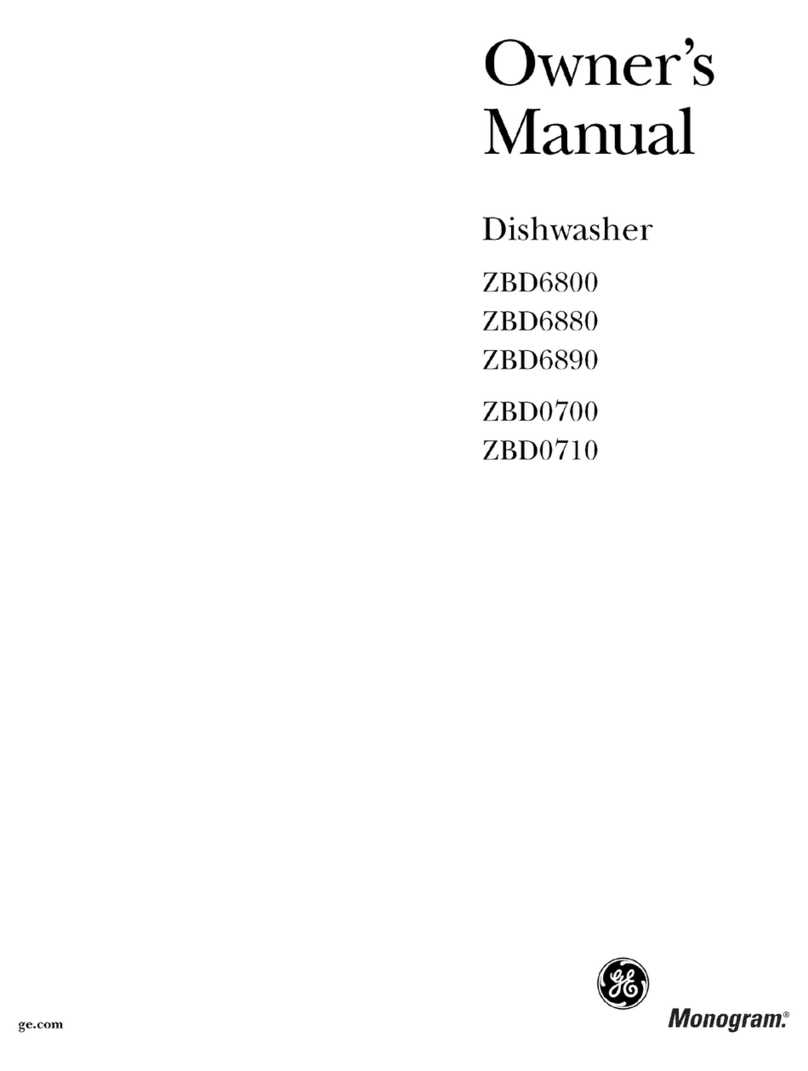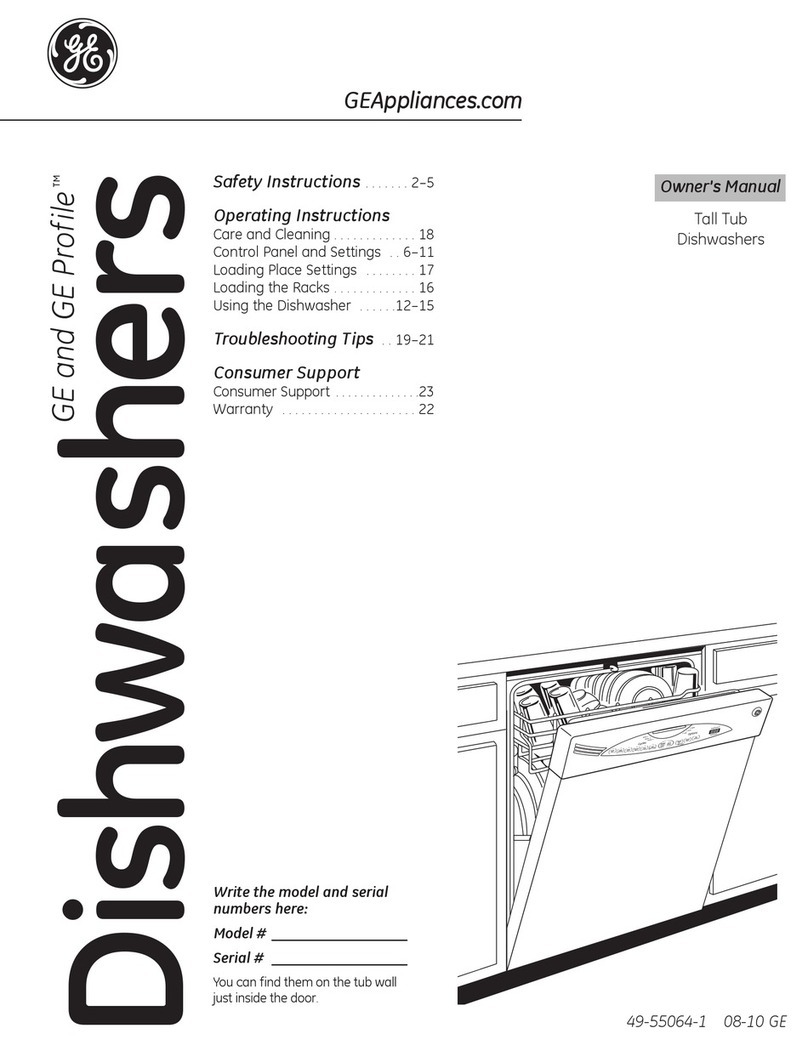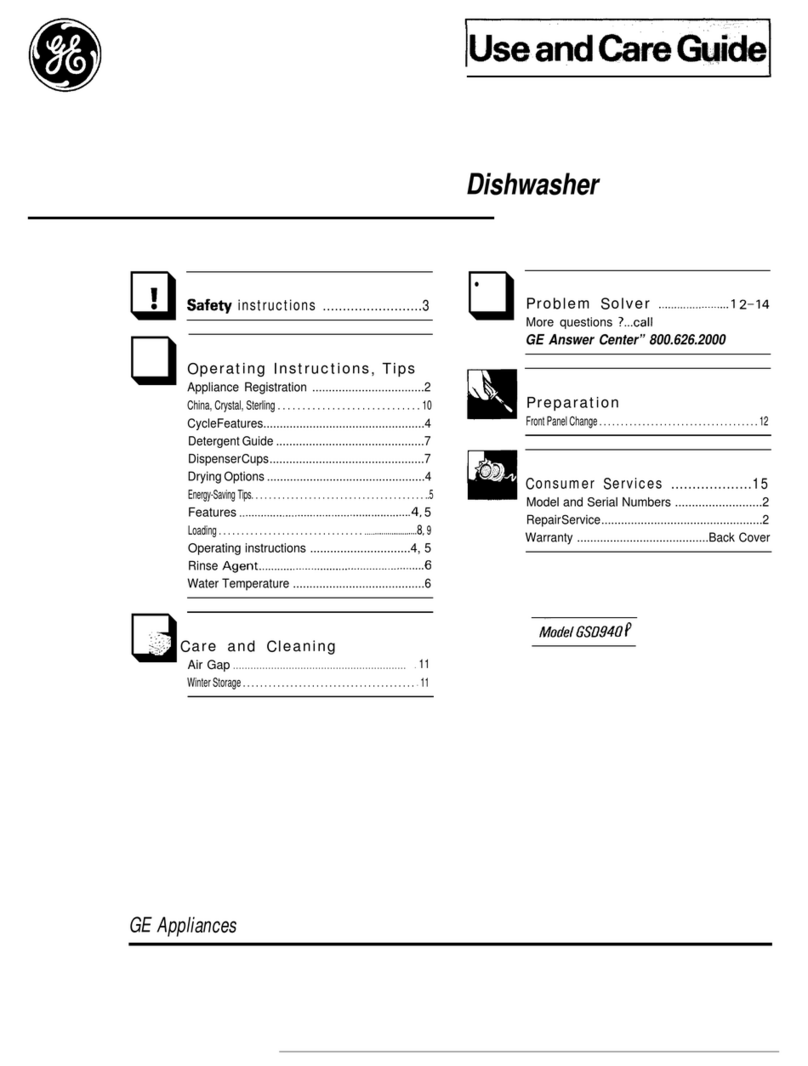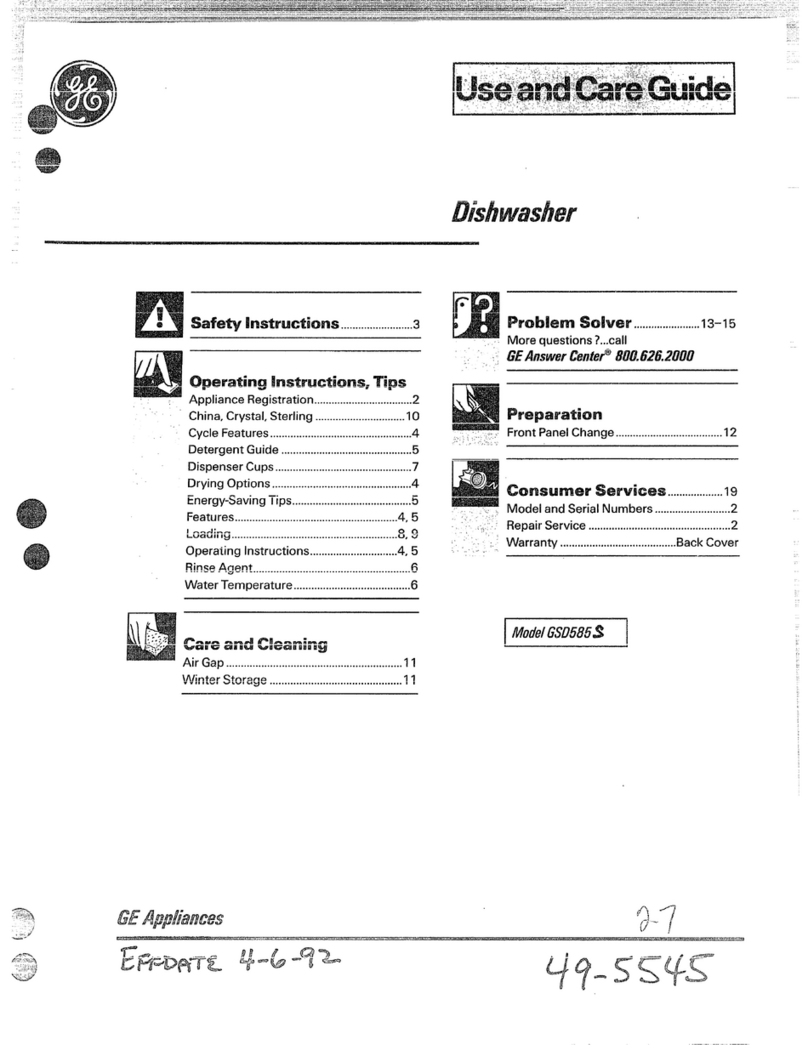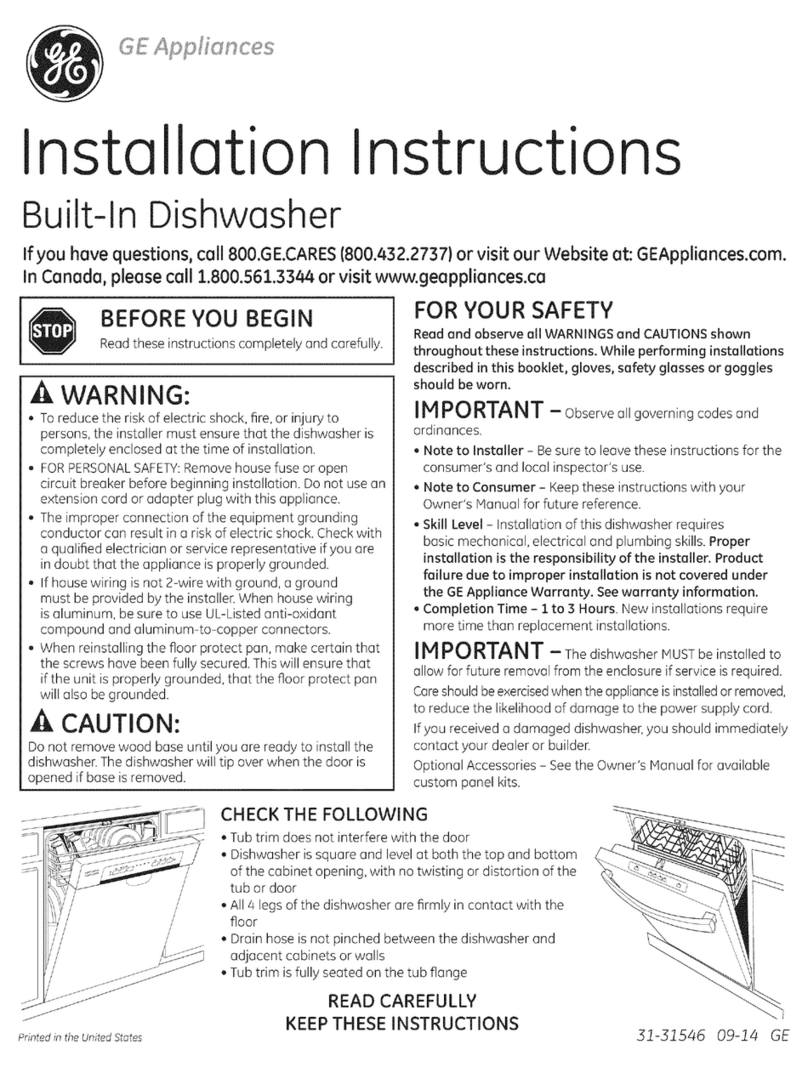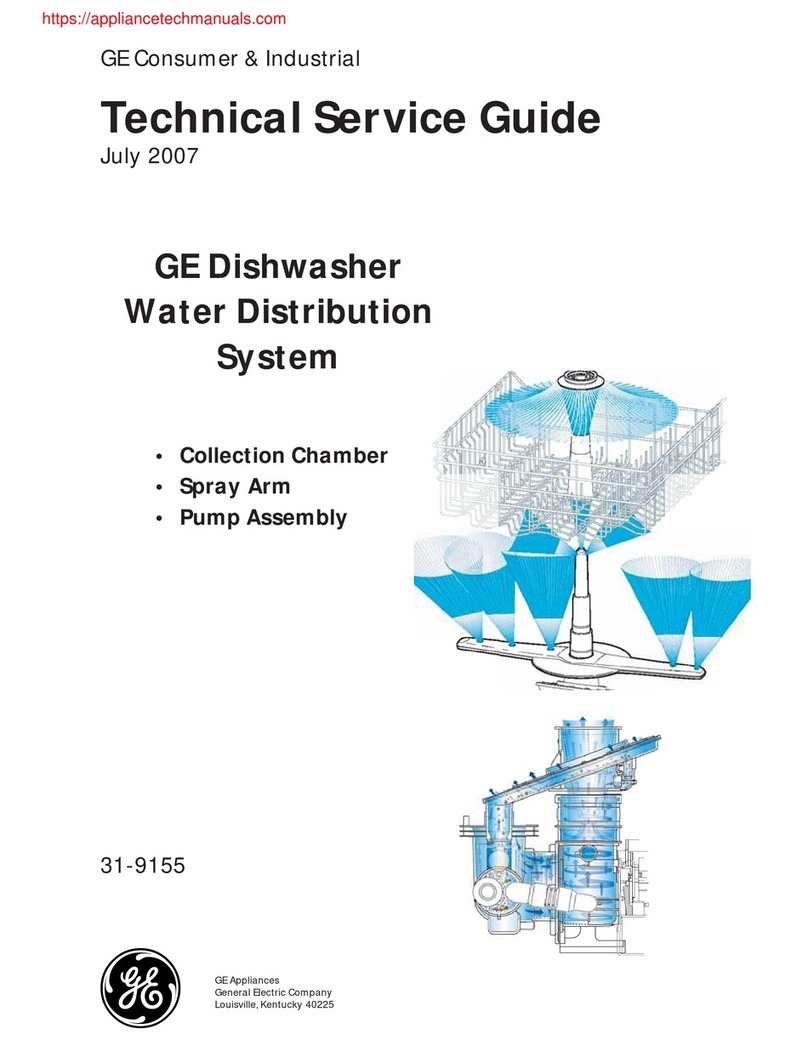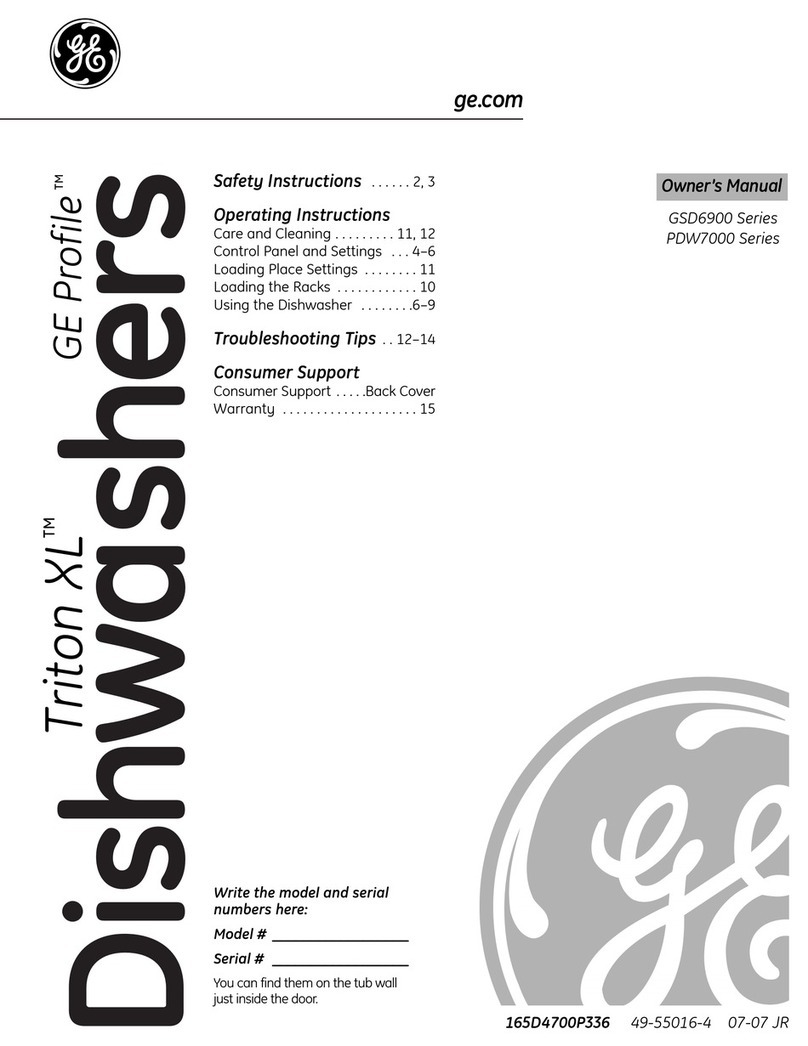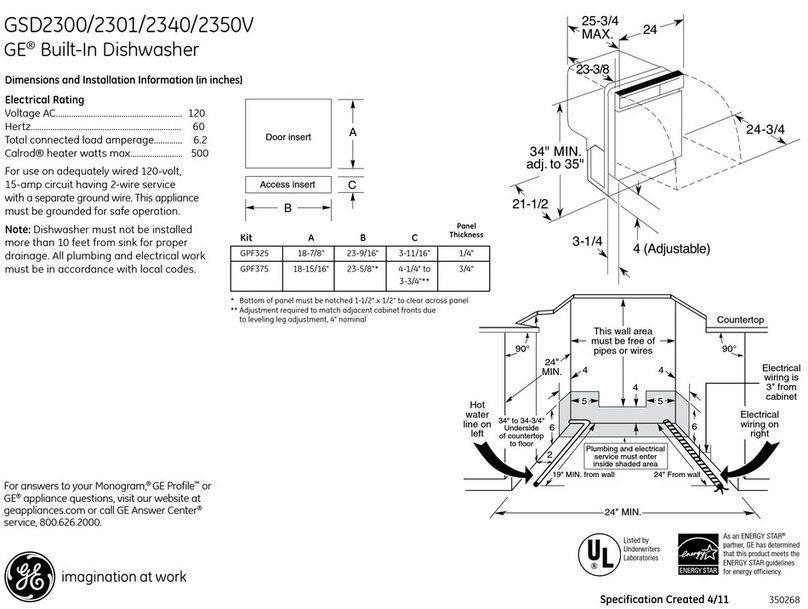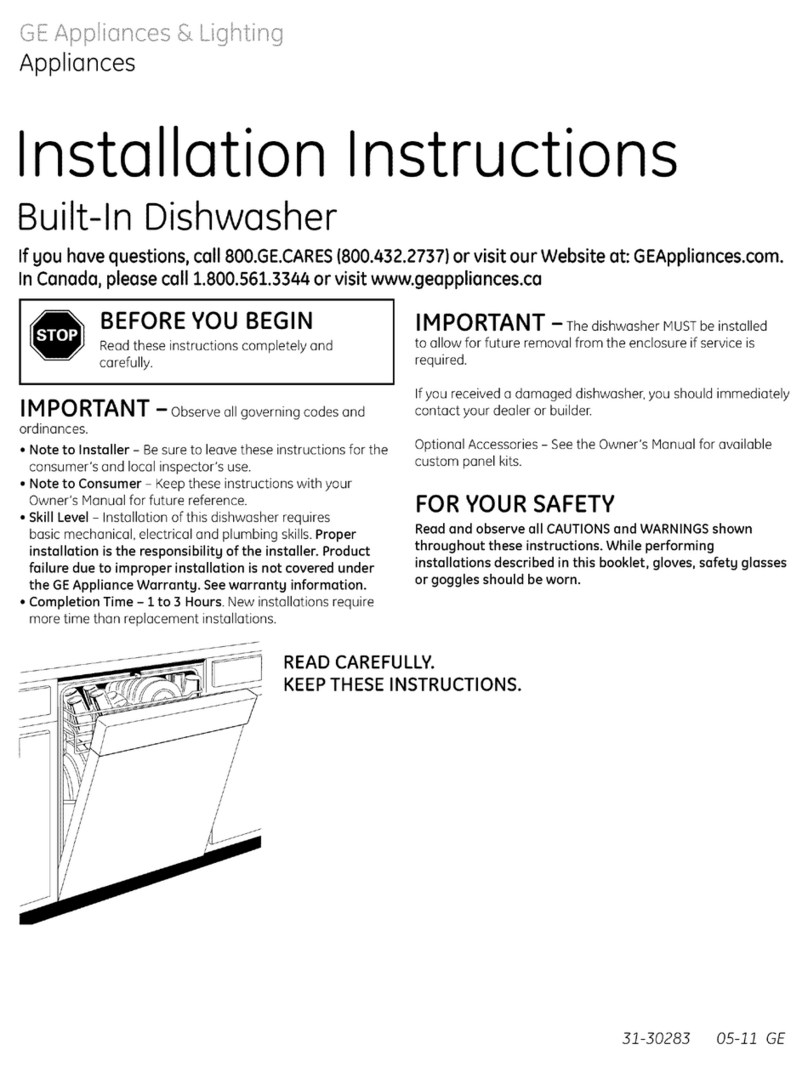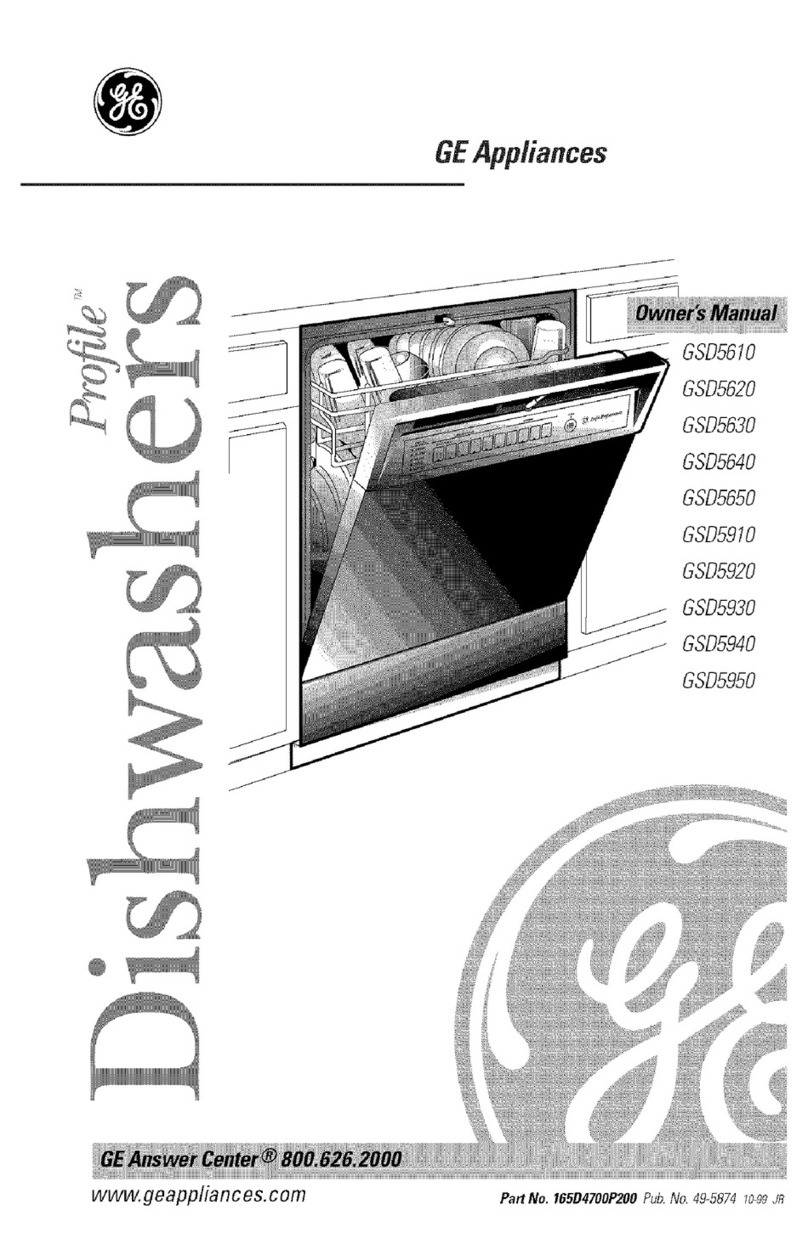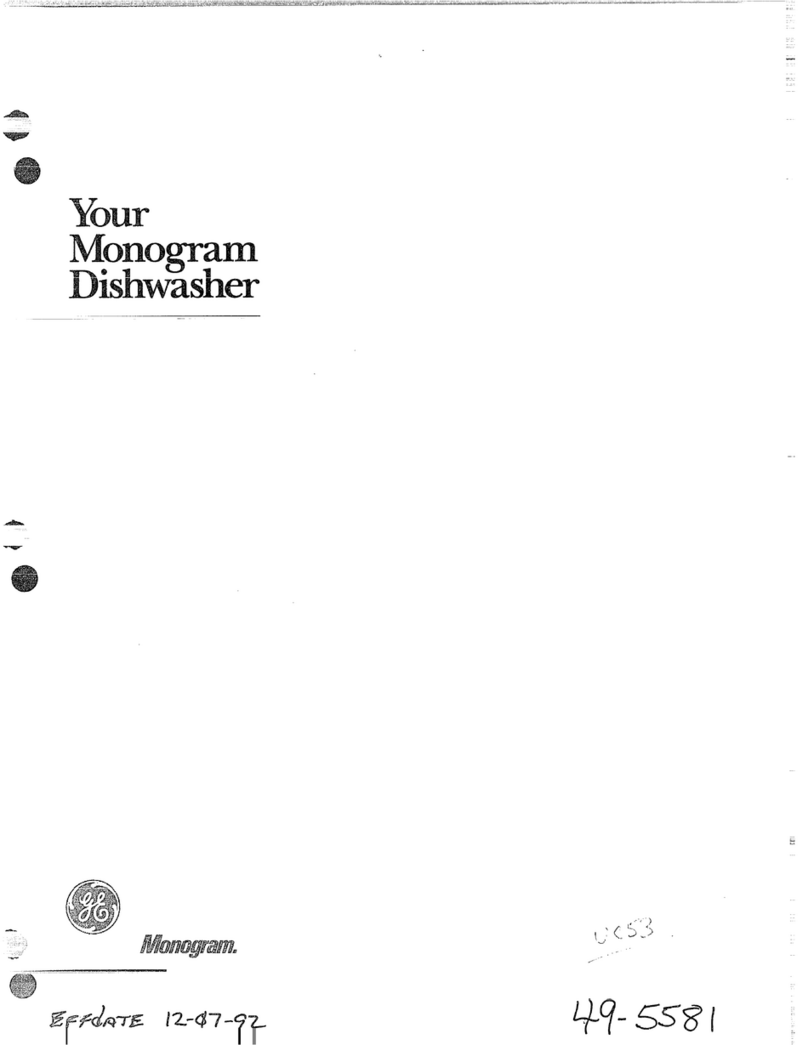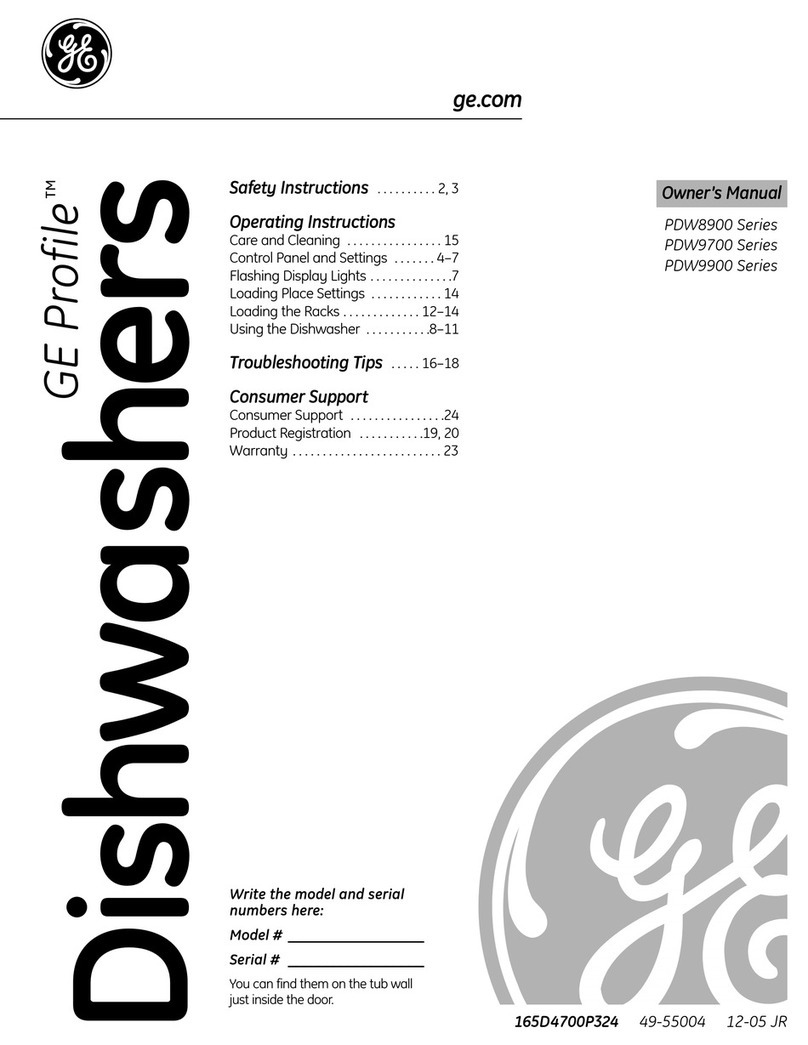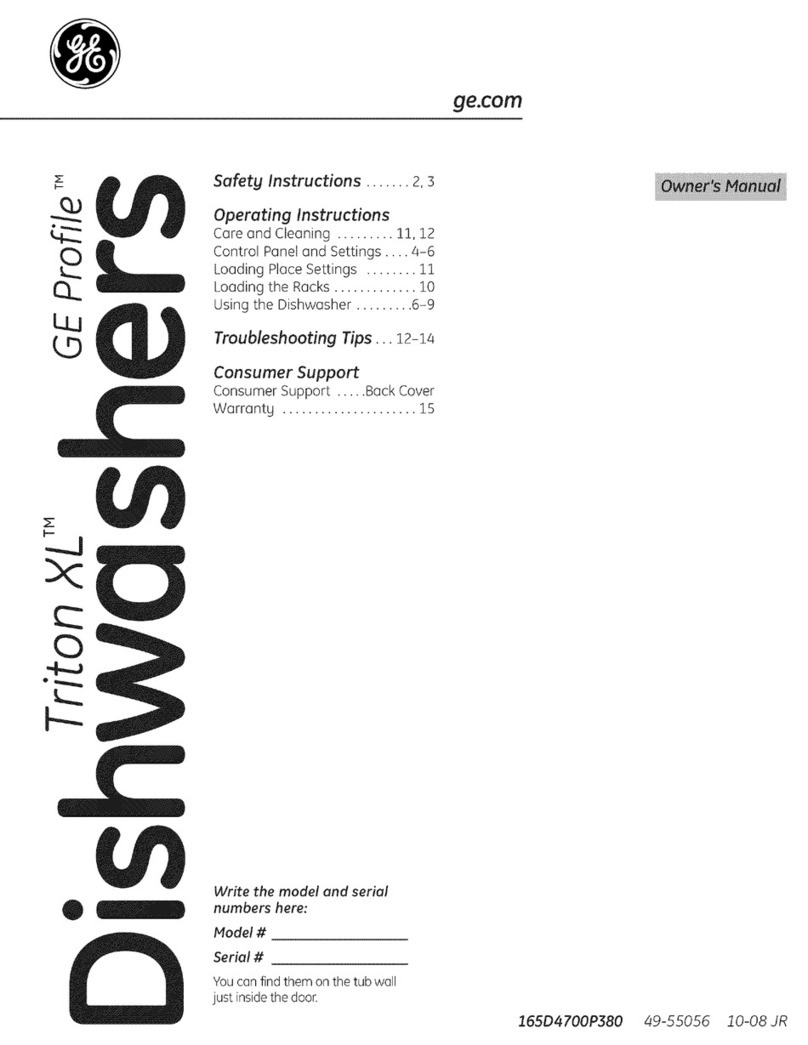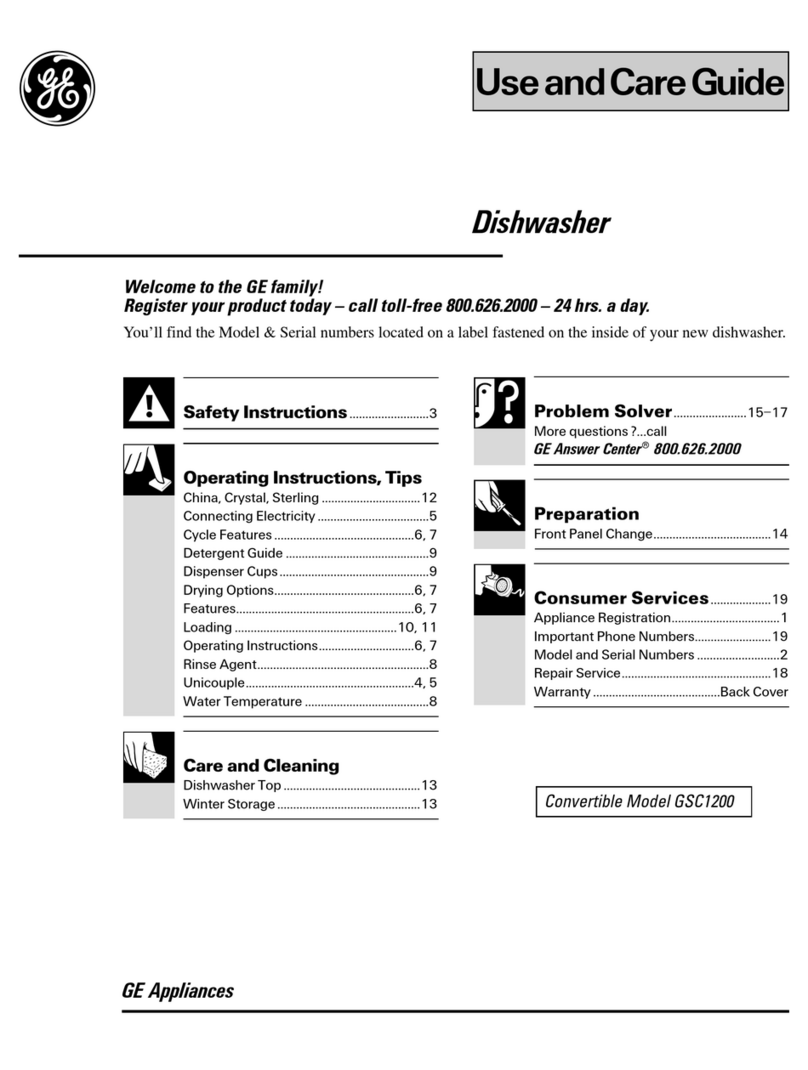
■Use this appliance only for its intended purpose
as described in this Owner’s Manual.
■Use only powder, Cascade®Complete Action Packs,
liquid detergents or rinse agents recommended for
use in a dishwasher and keep them out of the reach
of children. Cascade®and Cascade®Complete
Automatic Dishwashing Detergents, and Cascade®
Rinse Aid rinse agents have been approved for use
in all GE dishwashers.
■Locate sharp items so that they are not likely
to damage the door seal.
■Load sharp knives with the handles up to reduce
the risk of cut-type injuries.
■Do not wash plastic items unless marked
dishwasher safe or the equivalent. For plastic
items not so marked, check the manufacturer’s
recommendations.
■Do not touch the heating element during or
immediately after use.
■Do not operate your dishwasher unless all enclosure
panels are properly in place.
■Do not tamper with controls.
■Do not abuse, sit on or stand on the door or dish
rack of the dishwasher.
■Do not allow children to play around the dishwasher
when opening or closing the door due to the
possibility of small fingers being pinched in the door.
■Do not discard a dishwasher without first removing
the door of the washing compartment or the door
latch.
■Do not store or use combustible materials, gasoline
or other flammable vapors and liquids in the vicinity
of this or any other appliance.
■Do not allow children to play with, on or inside this
or any discarded appliance.
WARNING! When using your dishwasher, follow basic precautions,
including the following:
■Use este electrodoméstico sólo para su propósito
original, como se describe en el Manual del
Propietario.
■Use sólo polvo, Paquetes de Acción Completa de
Cascade®, detergentes líquidos o agentes de
enjuague recomendados para uso en un
lavavajillas, y mantenga los mismos fuera del
alcance de los niños. Los Detergentes para Lavado
en Lavavajillas Automáticos Cascade® y Cascade®
Complete, y los agentes de enjuague de Cascade®
Rinse Aid fueron aprobados por su uso en todos los
lavavajillas de GE.
■Ubique artículos puntiagudos de modo que no haya
posibilidades de daños sobre el sellador de la
puerta.
■Ubique artículos puntiagudos de modo que no haya
posibilidades de daños sobre el sellador de la
puerta.
■No lave artículos de plástico, a menos que figure
que son seguros para uso en lavavajillas o una
indicación equivalente. Si se trata de artículos de
plástico que no cuentan con dicha indicación,
consulte las recomendaciones del fabricante.
■No toque el elemento de calefacción durante o
inmediatamente después del uso.
■No toque el elemento de calefacción durante o
inmediatamente después del uso.
■No toque el elemento de calefacción durante o
inmediatamente después del uso.
■No abuse, no se siente ni se pare sobre la puerta o
la bandeja del plato del lavavajillas.
■No permita que los niños jueguen alrededor del
lavavajillas al abrir o cerrar la puerta, debido a la
posibilidad de que sus dedos pequeños sean
presionados contra la puerta.
■No permita que los niños jueguen alrededor del
lavavajillas al abrir o cerrar la puerta, debido a la
posibilidad de que sus dedos pequeños sean
presionados contra la puerta.
■No guarde ni use materiales combustibles, gasolina
u otros vapores inflamables y líquidos cerca de éste
ni de otros electrodomésticos.
■No guarde ni use materiales combustibles, gasolina
u otros vapores inflamables y líquidos cerca de éste
ni de otros electrodomésticos.
¡ADVERTENCIA! Al usar su lavavajillas, siga las precauciones básicas,
incluyendo lo siguiente:
READ AND FOLLOW THIS SAFETY INFORMATION CAREFULLY.
SAVE THESE INSTRUCTIONS 5
IMPORTANT SAFETY INFORMATION
READ ALL INSTRUCTIONS BEFORE USING—
SAVE THESE INSTRUCTIONS
Consumer SupportTroubleshooting TipsOperating InstructionsSafety Instructions
